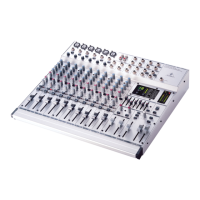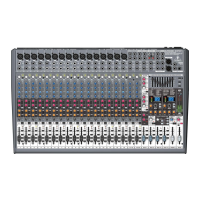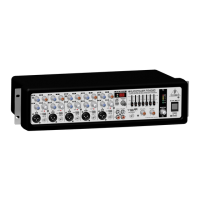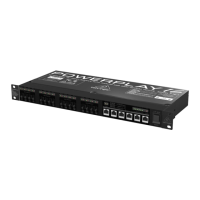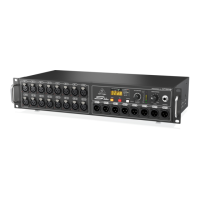13
E
Fig. 7.1: Setup example
7.2 Initializing channels for gain setting
1) Set gain to minimum and all Aux Sends to off (fully counter-clockwise).
2) Set EQ to flat (all knobs at 12 o'clock).
3) Set the output level to unity gain (P23 set to 0).
7.3 Auditioning a signal and setting up a channel
1) Turn up channel volume to unity gain ( to 0). All other channel volume controls should be set fully anti-
clockwise (minus infinity).
2) Generate a signal, i.e. a voice through a microphone. There should now be some activity at the bargraph
meters .
3) For Mic Channels: Adjust the Gain control until transient peaks are regularly hitting +6 dB. Continuous
signals should not exceed 0 dB.
4) For Stereo Channels and other Stereo Line Inputs, use the output volume of the source instrument or FX
unit to effect gain adjustment until transient peaks are regularly hitting +6 dB. Continuous signals should
not exceed 0 dB.
5) Altering EQ will affect a channel's gain. If EQ is adjusted at any time, repeat steps 2 and 3 or 4.
6) Turn the channel's volume control fully anti-clockwise. Move onto next channel and repeat steps 1 thru 6.
7) Once all channel inputs have been set for level, turn all active channel level controls back to 0 dB. You are
now ready to start mixing.
7. SETTING UP

